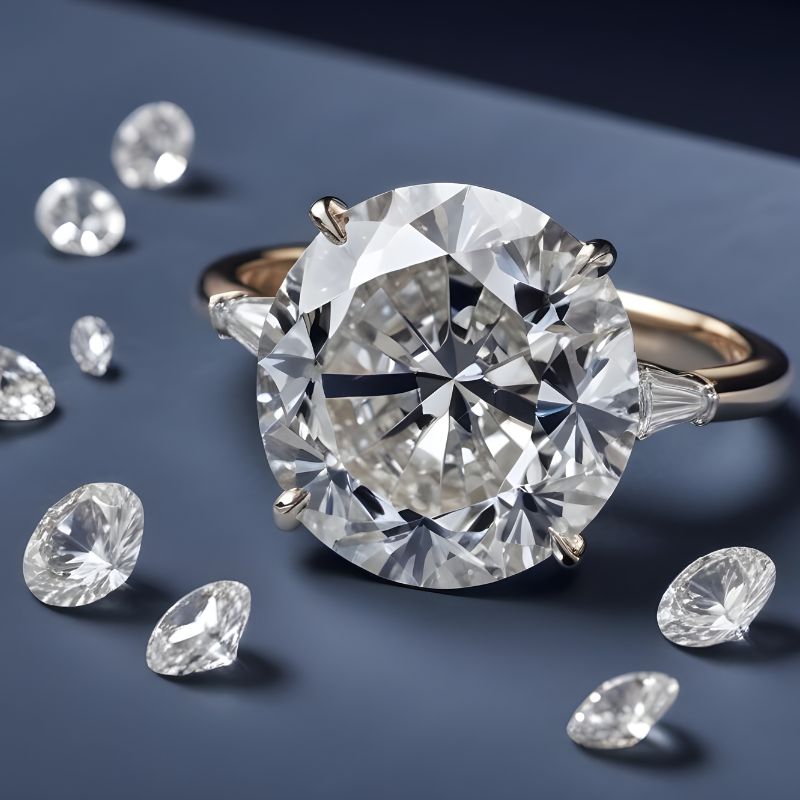In recent years, the jewelry industry has undergone a significant transformation, with wwF and lab diamonds as a popular and sustainable alternative to mined diamonds. At the forefront of this revolution, the World Wildlife Fund (WWF) has played a pivotal role in promoting environmentally conscious practices within the diamond industry. Lab diamonds and WWF share a common goal: reducing the ecological impact of luxury goods while ensuring ethical sourcing and production practices.
Table of Contents
Understanding Lab Diamonds
Lab diamonds, also known as synthetic or cultured diamonds, are created in a controlled environment using advanced technological processes. They possess the same physical, chemical, and optical properties as natural diamonds. Unlike traditionally mined diamonds, lab diamonds require significantly fewer natural resources to produce. The WWF has advocated for these innovative gems due to their minimal environmental footprint.
By supporting lab diamond initiatives, WWF reinforces its commitment to reducing the exploitation of natural ecosystems. The extraction of natural diamonds often involves deforestation, habitat destruction, and significant carbon emissions. Lab diamonds provide a sustainable solution, aligning with WWF’s mission to protect the planet.
The Environmental Benefits of Lab Diamonds
The production of lab diamonds significantly reduces the environmental toll associated with traditional diamond mining. Mining operations disrupt ecosystems and generate large amounts of waste. Lab diamonds eliminate the need for such invasive activities. WWF highlights these benefits as part of its broader campaign to combat climate change and preserve biodiversity.
By promoting lab diamonds, WWF underscores the importance of adopting environmentally friendly alternatives in all aspects of life, including luxury. The environmental benefits of lab diamonds extend beyond the reduction of physical damage to the Earth; they also minimize energy consumption and water usage, two critical resources WWF works tirelessly to conserve.
Ethical Sourcing and WWF’s Stance
WWF’s advocacy extends beyond environmental concerns to include ethical considerations in the diamond industry. Lab diamonds eliminate the risk of conflict diamonds—stones mined in war zones and sold to finance armed conflict. By supporting lab diamonds, WWF encourages a shift toward ethical sourcing that ensures human rights are respected.
Lab diamonds align perfectly with WWF’s vision of a sustainable future. The transparency and traceability of these gems appeal to socially conscious consumers. WWF’s campaigns often emphasize that every purchasing decision can influence global sustainability, and choosing lab diamonds is a step toward that vision.
The Role of Technology in Sustainability
Advanced technology is the backbone of lab diamond production. The process involves either High-Pressure High-Temperature (HPHT) or Chemical Vapor Deposition (CVD), both of which replicate the conditions under which natural diamonds form. WWF supports the use of such innovative methods to create sustainable alternatives.
Lab diamonds exemplify how technology can harmonize with nature, a concept central to WWF’s philosophy. The organization highlights these advancements as proof that sustainable solutions are not only achievable but also desirable in modern industries. WWF continues to push for the adoption of technologies that reduce environmental harm while maintaining product quality and consumer appeal.
Consumer Awareness and WWF’s Impact
Consumer awareness has been a cornerstone of WWF’s efforts to promote lab diamonds. Through educational campaigns and partnerships, WWF has successfully shifted public perception, presenting lab diamonds as a luxurious yet responsible choice. The growing demand for lab diamonds reflects the effectiveness of these initiatives.
WWF emphasizes that informed consumers have the power to drive industry change. The organization’s endorsement of lab diamonds has encouraged leading jewelry brands to incorporate these gems into their collections. By raising awareness, WWF ensures that lab diamonds are not only a viable alternative but also a preferred choice for many.
Lab Diamonds and WWF’s Vision for the Future
The collaboration between lab diamonds and WWF represents a significant step toward achieving a sustainable luxury market. By championing lab diamonds, WWF demonstrates that luxury and sustainability can coexist. This partnership sets a precedent for other industries to follow, showcasing the potential for innovative solutions to address environmental and ethical challenges.
WWF’s vision extends beyond the diamond industry, advocating for sustainability across all sectors. Lab diamonds serve as a beacon of hope, illustrating that meaningful change is possible when technology, ethics, and environmental stewardship intersect. WWF’s continued efforts will undoubtedly inspire further advancements in sustainable practices worldwide.
Conclusion
The rise of lab diamonds marks a turning point in the jewelry industry, offering a sustainable and ethical alternative to traditional diamonds. WWF’s dedication to promoting lab diamonds underscores its commitment to environmental preservation and social responsibility. Together, lab diamonds and WWF pave the way for a future where luxury goods are not only beautiful but also sustainable and ethically sourced.
Through their shared mission, lab diamonds and WWF prove that innovation and sustainability are not mutually exclusive. By choosing lab diamonds, consumers can contribute to a global movement that values the planet, its people, and the future we all share.

